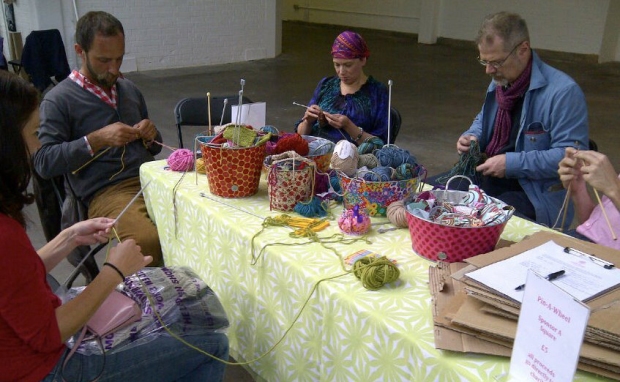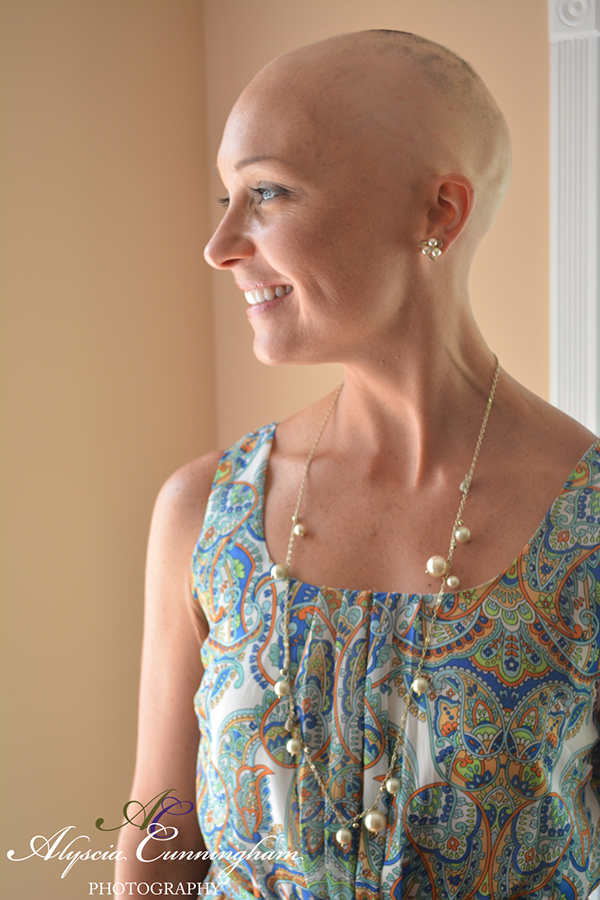Jessica and Lea are both young Hodgkin’s Disease survivors and met each other through our Sisters-in-Pink peer matching support program. The bond that formed between them was instantaneous and extended beyond their similar diagnosis.
While no two people will ever go through such an experience in the same way, some things were very clearly similar (such as their positive attitudes and mutual love for travel) and even the things that were different (such as how they coped with their hair loss) only brought them closer.
Read more about their experience and hear their individual stories in this shared interview with them. We hope you are as inspired as we are by the incredible journeys of these two beautiful ladies:
1. You were both diagnosed with Hodgkin’s Disease – a type of cancer that many people probably don’t know much about or may never have even heard of before. How much did you yourself know about it before your diagnosis and what did you learn along the way?
Jessica: Hodgkin’s Disease was completely alien to me!
Both my doctor and my father (who is also a doctor) told me more about it. I found out that Hodgkin’s is a friendly, curable cancer that eventually helped me grow so much on a personal and spiritual level.

Lea: Astonishingly, my uncle was diagnosed with the same condition a while back despite there not being a hereditary link. He was diagnosed with stage 4 Non-Hodgkin with a need of bone marrow transplant and is fully recovered today, which was far from being my case.
To tell you the truth, I knew it existed, but I needed it explained to me in a way since I wasn’t diagnosed with the same lymphoma, but with a particular one considered to have a higher treatment success rate. I had every reason to be full of positivity.
And of course, knowing my uncle had been through it all before made it feel like I would confide in him.
2. In one sentence, what was the first thought or reaction when your doctor told you the news?
Jessica: My hair…
Lea: Actually, I read the news on the doctor’s lips, while isolated in the imaging room. ‘’Tumor’’ used to be a big word, but right then I knew it was never going to be the same.
So, to describe it in a symbol, it’s the “no voice input button” on the keyboard.
3. No parent wants to hear their child has cancer and no doubt it’s even harder when the person fighting it is that young. How did your parents react/cope during this period?
Jessica: My parents dealt perfectly with the news and succeeded to hide their concerns and worries. They both took amazing care of me, but made sure not to suffocate me.
Lea: No one is ever prepared to hear that their child has a life-threatening illness. At the very least, they knew major changes will occur. They did the very best to give me strength and help me overcome this challenge in the best conditions.
4. What were the best and worst things anyone said or did for you during this period?
Jessica: Turning my chemo room to a very safe and familiar environment where a friend sang and played the guitar, and another held me to sleep (since it was impossible to lay my head while wearing the heavy scalp).
The worst thing that has been said to me was: “How would you know what fun really means? You spend your days sleeping” I took it very badly and actually couldn’t sleep at all that night..
Lea: The best thing I was told during this period was by a colleague that I once randomly saw in a pub: ‘Lea, I love your new style! Did you shave your head for a cause?’ I have plenty of other stories..
As for the worst thing done, it was having a person smoke right next to me. It was a sign of major disrespect.
5. How did you deal with the hair loss resulting from chemo?
Jessica: I didn’t have to. I used the scalp cooling system: a scalp cap with a temperature of -6 degrees that prevents or lowers hair loss.
The scalp experience honestly made my chemo sessions harder, I kept feeling sick because of the difference of temperatures between my body and my head. But the results were amazing – I kept all of my hair!
Lea: I was put in touch with a Hodgkin’s disease survivor, who was a great inspiration. She encouraged me to shave my head early on as it is less traumatic when the hair begins to fall.
It was hard for my parents, which is why I bought a wig to comfort them. But with time, they got used to the turban/hat idea and agreed that wearing colorful headwear made me look glamorous. I felt more comfortable and natural.
It wasn’t always easy to find different styles of turbans in Lebanon, so I would order them online (from London and the US). I learned how to tie a turban through Youtube with Ascia Akf. I think it’s one of the simplest and most flattering turban styles.
6. How did you manage to juggle work during your treatment?
Jessica: Being a freelancer made it much easier for me. After my chemo session, I rested for 3-4 days and recharged my energy to complete the work I had before the next session.
Lea: I am blessed to have been able to keep my daily routine as close to normal as possible. I was able to incorporate my chemotherapy within my work schedule.
My life didn’t really change other than not being able to do several sports activities or traveling. Maybe I wasn’t as energetic as I would have liked to be, but I managed. It was an expected part of the recovery process: the fatigue from chemotherapy was going to get better over time, the hair was going to grow back and the fear of recurrence was going to subside with the passing of the months.
I kept busy going out with friends, dancing, jogging and getting on with my life again. I knew that soon enough my life was going to get back to normal. If not the old normal, then for sure a new one and my life will resume, despite cancer and beyond it, so why put my life on hold?
7. Did your love life, or perspective on relationships, get affected during this period?
Jessica: My lover didn’t leave my side. I am forever grateful to the beautiful person who brought colors to my life during my tough days.
Lea: My love life wasn’t really affected much, but my priorities in life have changed during my cancer journey. It made me focus more on the important things in life, such as family and other relationships.
8. Cancer is far from funny business, but humor can certainly lighten the mood. Were there any funny moments or stories that came out of this experience?
Jessica: So many actually!
One of them is when I used to get paranoid every time I showered because of the amount of hair I would lose while showering (which turned out to be normal), so my sisters used to send me pictures of hair they’re losing after their showers to let me know my hair loss is normal. (Is this too weird?)
Lea: Right before my last chemo session, I organized a Cancer Farewell at my place under the theme of “Kissing Cancer Away”. The goal was to gather all the people that stood by my side and supported me throughout my journey.
All the content was customized with kisses (the wall of fame, Instagram booth, cocktail glasses, napkins, balloons, pins, cookies, etc..)


9. What drew you to take part in the Sisters-in-Pink program?
Jessica: Once my treatment was over, people around me chose to forget and not talk about it anymore. But cancer literally changed my life and I felt the urge to talk to someone who would understand what it’s like to be cancer-free.
Lea: I feel I have a lot to give. I was always socially-active and engaged with different NGOs, but my focus today is on Cancer and it definitely needs to be put into perspective.
10. How was the first meeting with each other?
Jessica: I was very nervous before meeting Lea, but once we sat together, everything went so smoothly and we talked for a couple of hours.
The most important thing that we have in common is that we both chose to take the best out of this experience. And I was very happy she shared her inspiring hair loss experience with me.
Lea: Meeting Jessica was something I was looking forward to as I really needed to share my experience with someone who’d been through the same disease. We realized we had a lot in common, even though some things were quite different, such as the treatment methods.
Overall, we both reacted the same way: we both recovered and are laid back.. and we both enjoy life a little bit more each day.
11. What do you wish more people knew or understood about Hodgkin’s Disease (or Cancer, in general)?
Jessica: It’s OKAY to talk about it! You don’t have to avoid asking us questions; this won’t make us any less sick. I wish people knew that cancer might be the worst thing that happened to some, but it can also be the best thing that happened for others.
Lea: If you have to pick one, this is the one to pick. No taboos or clichés on the topic.
12. What single piece of advise would you give someone who just got heard the phrase “You have cancer”?
Jessica: You don’t always have to be strong; it’s ok to crash sometimes. But know that you will come out of this experience richer than you’ve ever thought you’d be.
Lea: Suffering from this atrocity is a life experience. It’s fighting a good fight.
13. Any life-altering realizations as a result of beating cancer?
Jessica: I’m grateful for every single thing and person in my life, every moment every day.
Lea: More to come.
14. What are the top three things on your bucket list today?
Jessica: Go on a spiritual trip, help people with cancer stay as positive as they can be, and maintain a healthy lifestyle.
Lea:
1. One of my main concerns is to enforce an anti-smoking law in Lebanon.
2. Coaching, coaching, coaching.
3. Traveling.
15. Describe what being a survivor means to you in one word.
Jessica: Will.
Lea: Thankful.
Photographs provided are courtesy of Jessica and Lea respectively.

























